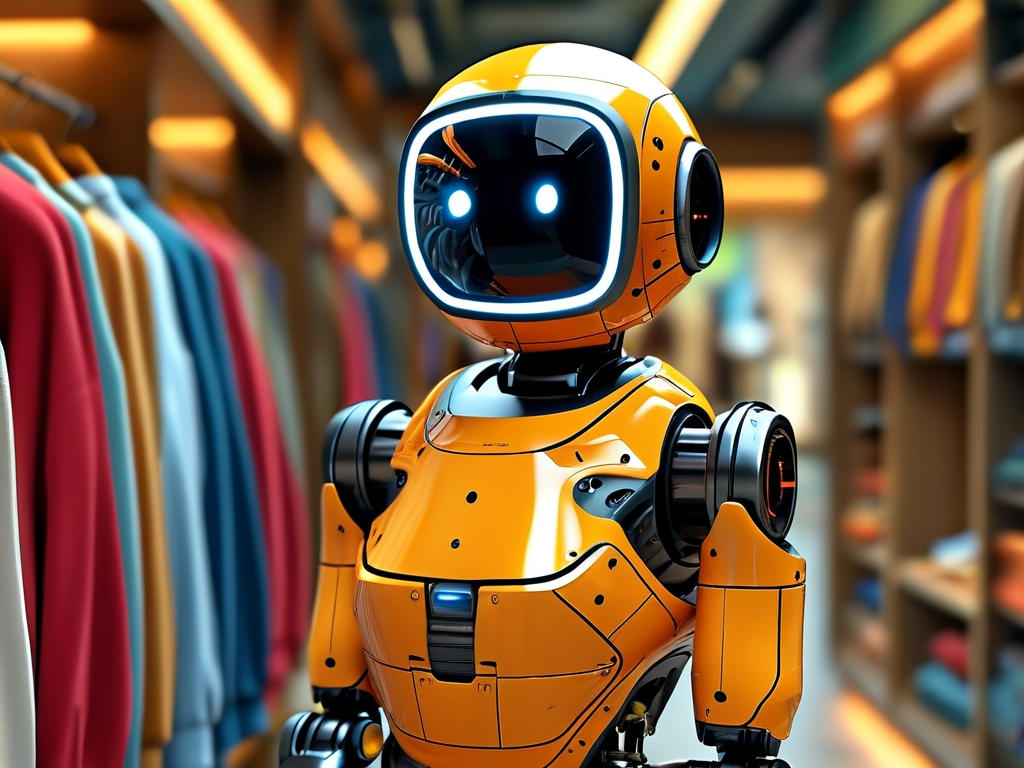The fashion industry stands at the brink of a technological revolution, driven by the rapid development of virtual fitting robot technology. This innovation combines artificial intelligence, computer vision, and advanced robotics to create personalized shopping experiences that were unimaginable just a decade ago. As global e-commerce continues to expand – projected to reach $8.1 trillion by 2026 according to Statista – retailers face mounting pressure to solve persistent challenges around sizing accuracy and returns. Enter virtual fitting robots: a game-changing solution reshaping how consumers interact with fashion in both digital and physical spaces.

How Virtual Fitting Robots Work
At its core, virtual fitting technology utilizes three key components:
- 3D Body Scanning: High-precision sensors capture over 200 body measurements in under 10 seconds
- Machine Learning Algorithms: Neural networks analyze body proportions and predict garment fit
- Augmented Reality Integration: Real-time simulations show clothing movement and drape
Leading systems like ZOZO's 3D Look Scanner and Alibaba's FashionAI can now achieve 98% measurement accuracy compared to manual tailoring. The process begins when users either step into a scanning booth (in physical stores) or upload photos through mobile apps. Advanced algorithms then create a digital twin that accounts for unique body characteristics like shoulder slope, hip curvature, and posture imbalances – factors traditional sizing charts completely ignore.
Retail Applications
-
E-Commerce Personalization:
Major platforms like ASOS and Zalando report 40-60% reduction in returns after implementing virtual fitting solutions. The "Try Before You Buy" feature powered by Virtusize now integrates with 300+ brands, allowing customers to compare new items against their best-fitting owned garments. -
Smart Changing Rooms:
Rebecca Minkoff's flagship stores feature AI-powered mirrors that suggest complementary items based on selected garments. When a customer tries a blazer, the system might recommend matching pants using inventory data and style compatibility algorithms. -
Custom Tailoring Automation:
Startups like Bold Metrics combine body scan data with production robotics to create made-to-measure clothing at off-the-rack prices. Their system reduces fabric waste by 22% through precise pattern calculations.
Technical Breakthroughs
Recent advancements have dramatically improved system capabilities:
- Material Physics Engines: Nvidia's ClothSim technology realistically simulates how different fabrics behave on various body types
- Micro-Movement Analysis: Tokyo-based developer Style.me tracks 68 skeletal points to predict garment comfort during activities like sitting or stretching
- Multi-Sensory Feedback: Experimental systems now incorporate thermal sensors and pressure mapping to evaluate clothing comfort beyond visual fit
Consumer Impact
A 2023 McKinsey survey reveals that 73% of shoppers consider accurate virtual try-ons more important than free shipping. The psychological effects are profound:
- Body positivity improvements through avatar customization options
- Increased confidence in purchasing unfamiliar brands
- Reduced environmental guilt associated with returns
Challenges and Limitations
Despite progress, significant hurdles remain:
- Data Privacy Concerns: Body scan data protection remains a hot-button issue
- Technical Limitations: Sheer fabrics and complex drapes still challenge simulation accuracy
- Implementation Costs: Full-system deployment averages $250,000 per retail location
Future Developments
The next generation of virtual fitting tech focuses on:
- Haptic Feedback Integration: Developing touch-responsive screens that mimic fabric textures
- AI Stylist Assistants: Systems that learn individual style preferences over time
- Metaverse Compatibility: Creating interoperable avatars for virtual world fashion experiences
Environmental Benefits
With the fashion industry responsible for 10% of global carbon emissions, virtual fitting solutions offer crucial sustainability advantages:
- 28% reduction in return-related transportation emissions (Ellen MacArthur Foundation)
- 15% decrease in overproduction through demand prediction analytics
- 90% less water usage compared to physical sample production
As we approach 2025, over 60% of luxury brands plan to implement virtual fitting solutions according to LVMH's tech division. This technology isn't just changing how we shop – it's redefining the relationship between body, clothing, and digital identity. While challenges persist, the convergence of AI, robotics, and extended reality suggests a future where every garment fits perfectly before it's even manufactured. The fitting room of tomorrow might not exist physically at all, but as a seamless interface between human and machine, crafting personalized fashion experiences at scale.

